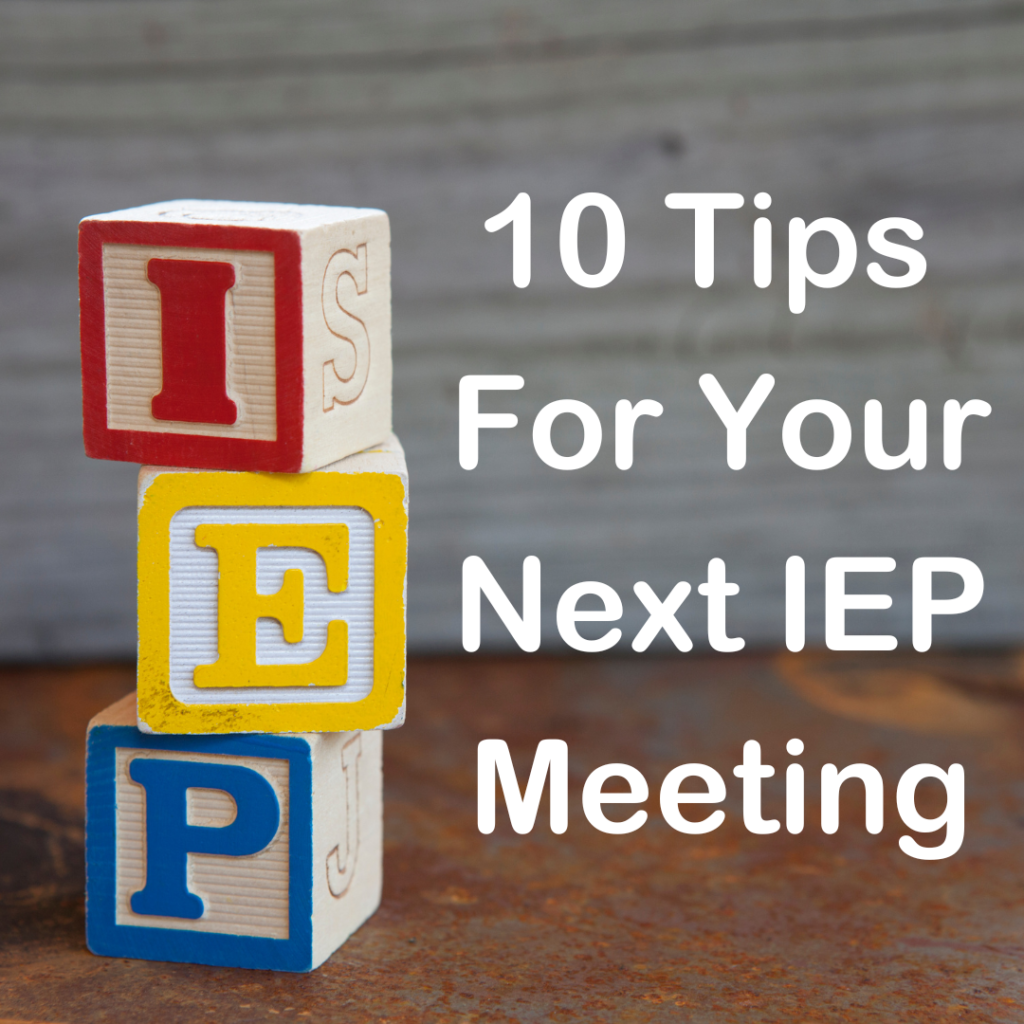10 Tips For Your Next IEP Meeting
The kids are back in school and for many families, that means resuming IEP meetings. For some, these meetings can bring anxiety, frustration, and exhaustion. As the medical mom of a child with an IEP, I hope these tips will ease some of those stressors as you begin the school year! – Karlita, JJMF Community Engagement Associate
10 Tips for a Successful IEP Meeting:
- Approach the meeting with a “team” mindset. As parents and staff, it is your job to work collaboratively to determine what best works for your child in an educational setting. Try to remember that ultimately, you all have the same goal!
- Prepare in advance. Make sure that you familiarize yourself with your child’s previous IEPs and make a list of any concerns, questions or suggestions. Here is a link to a free IEP Planning Sheet.
- Create an IEP binder with hard copies. Some examples of what to include are: former IEPs, IEP meeting checklist, addendums, behavior plans, contact information for your child’s team as well as a communication log, report cards/progress notes, work samples, private evaluations, any notes you’ve taken, etc. There are lots of free IEP binder templates online. Here is a link to an example.
- Advocate–you know your child better than anyone! Listen to how your child feels about school, learning and what they enjoy or don’t enjoy. If you don’t agree with a plan or something isn’t working, absolutely speak up.
- Know your rights. Familiarize yourself with SSD laws, IEP Parent’s Rights and Responsibilities and procedural safeguards. This book is a great resource!
- Don’t sign anything that day! Take home a copy of the IEP draft to review before signing off on it. This allows you time to process what was recommended, seek clarification and to address any changes that you didn’t think of at the meeting. You can also use this time to have the draft reviewed by members of your child’s medical or therapy team. However, remember you can request a meeting at any time to make changes or address lingering questions.
- Communication. This is such an important component when it comes to the IEP process. Throughout the year, check in with teachers and staff to see what areas your child is doing well in and what areas are a challenge. Keep the team informed of any growth or regressions you are seeing at home and let them know who you will be bringing to the meeting.
- Be Flexible. Your child’s team may have some ideas that are different from your own; be sure to hear them out. At some point, you will likely have a situation where you don’t agree with a team member on something. Rather than automatically dismissing their recommendation, hear them out and ask questions to understand how they came to that conclusion. Although you know your child best, the team also has extensive experience in this process and it’s a great opportunity to learn from one another.
- Bring support. Did you know you can technically bring as many people as you like to an IEP meeting? Of course you don’t want an overcrowded room, but bringing along someone for emotional support (spouse/friend/grandparent) or professional support (an IEP advocate or a member of your therapy or medical team) can help the meeting go smoothly and lower your anxiety levels.
- Give yourself grace. If you need to take a break during the meeting, that’s ok! If you need to decompress following the meeting, allow yourself the grace to do so. Remain confident in your ability to contribute to the team in order to yield the best results for your child.







